Now here’s a project that doesn’t take too much time and is simply perfect for the whole family. The materials used for this are all items you can hunt for in parks or woods and make for a great excuse to go on a hike. With a little help from adults, kids can have a blast assembling these amazing and beneficial homes.
What I’m looking to attract are solitary bees. Many people think that honey bees and bumble bees are the only types of bees around. The fact is that they only represent about 10% of the bee species around and aren’t even native to North America. A majority of bees don’t make honey, but one thing that they do make is excellent pollinators!
Just one solitary bee, like the mason bee, can do the pollination work of 120 honey bees! They lack the little pollen baskets that honey bees have so they visit flowers way more often than social bees. And because they don’t have that golden treasure trove to protect, they don’t swarm and are safe around people and pets. There are three basic types of solitary bees but all come in varying shapes and sizes.
Solitary bees will either chew tunnels with their strong mandibles (like the carpenter bees) or they will seek out existing burrows left by beetles or hollow stems (like the mason or leaf cutter bee) to lay their eggs. They’ll crawl to the back to deposit an egg and then leave a lovely little packed lunch of pollen and nectar for the baby to eat. She’ll leave just enough room for the larvae to develop and then seal it off and repeat the process until the cavity is filled.
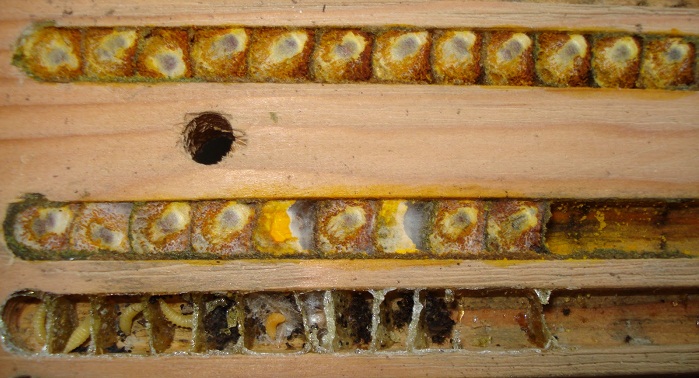
She can control whether the egg is male or female and lays females towards the back as males hatch before females do. That way the bees can emerge without blocking one another. I guess at least in the bee world, the males mature faster.
These types of bees are so often overlooked when people think about the recent decline in pollinators. Yet they do far more work than the honey bees do in that regard. All the more reason to do a cool project like making a place for them to live. Urban environments are not very forgiving when it comes to providing a home to these useful critters. Gardeners seldom leave dead wood laying around or old stems from plants that the bees would normally call home.
So not only is this a simple and fun project to get the whole family involved in, you’re doing a great service which will only provide you with enrichment as well as a bountiful crop! You and the kids can monitor the tunnels and see what variety of species have moved in. On rainy days, you’ll see them in there staying dry but most of the time you’ll know they’re using the home when you see the ends sealed up. This would also make for a great project for schools, especially those that have gardens.
So let’s get to the fun part…the building of the house. Continue reading “We Have a Vacancy: Building a Bug Hotel for Solitary Bees”
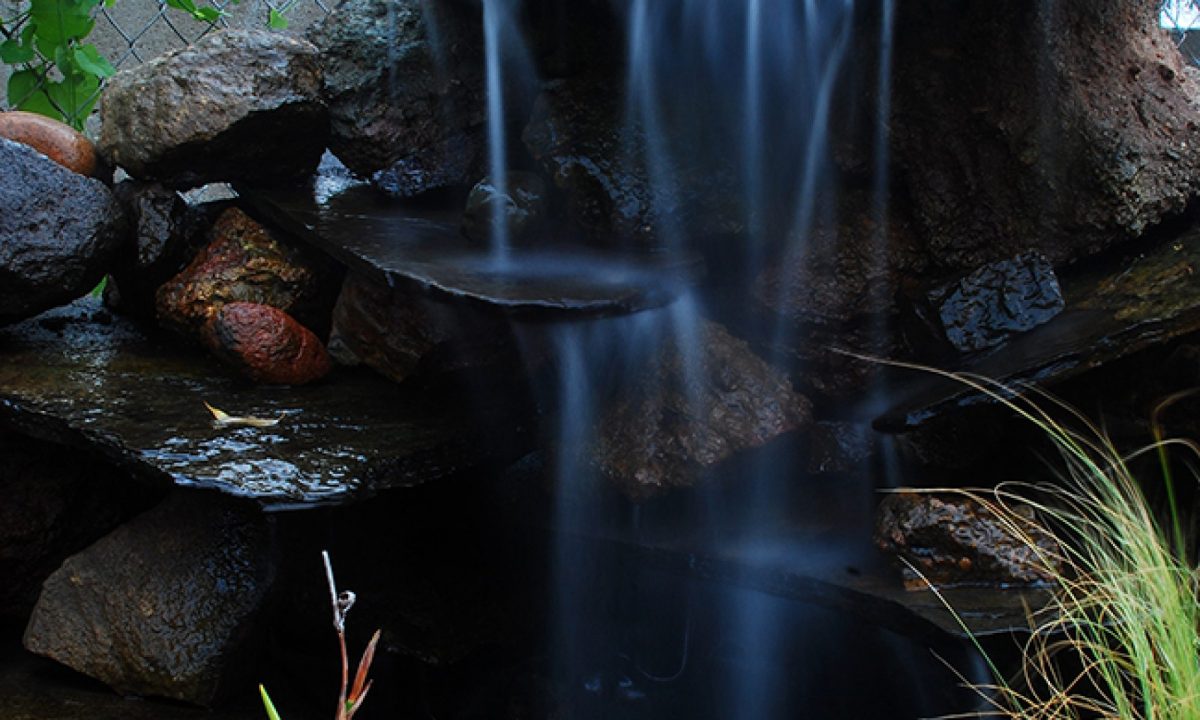

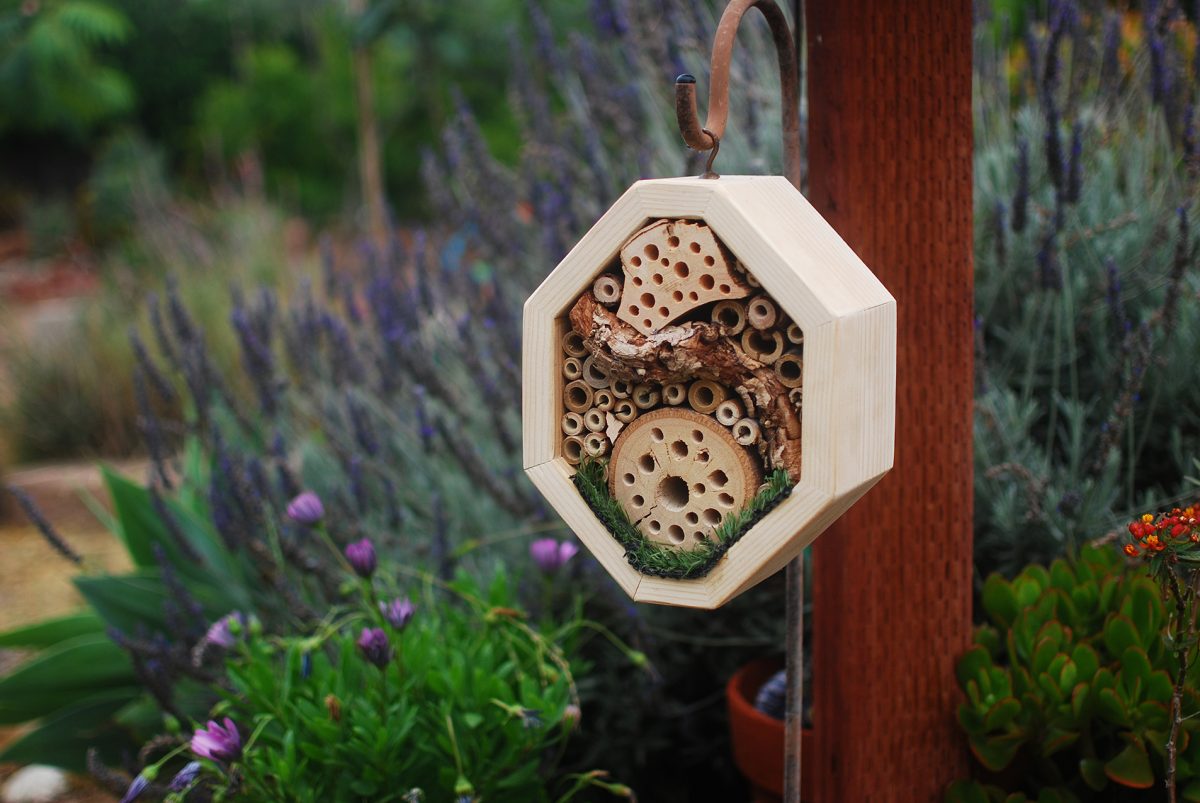
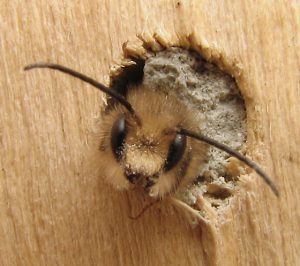
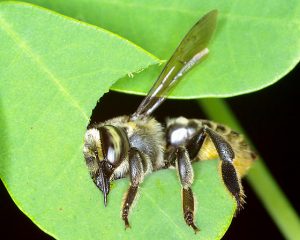





Here’s the deal with bonsai that most people neglect. It’s ALL about trunk development.
Most people will buy a sapling of a common bonsai breed and instantly begin wiring it up or cutting the branches. This is a waste of time because in order to get that harmonious ratio in real bonsai (vs. Mall-sai, the ones you see in shopping mall booths with glued rocks on the surface), you’ll need the tree to grow rather tall to develop the right trunk thickness. Then you’ll remove the entire top of the tree anyways. Like 3/4 of it at least. So why bother training branches that will be gone anyways?
For example, a 3″ diameter trunk has to be 16″-18″ in height in the end. A 1/2″ diameter trunk, which is typically what you’ll buy as a starter bonsai in malls would have to be like 3″ tall to get that ratio right. Or else it’ll just look like an over-pruned sapling. Which it is. But the idea is to give the illusion of a real giant tree.
So, to start with a seed, I’d grow it in the yard for a couple years. Un-prunned and we’ll fertilized with nitrogen and phosphorus rich fertilizer for maximum growth.
Then move it to a 5 gallon pot after pruning back the roots for a few years. And only then should you begin training and branch placement.
That’s the fastest way by seed. You’re looking at 4 years minimum.
Orrrr, you can find a larger tree or shrub that’s already in a 5 gallon pot and already has your desired trunk thickness and begin right now.
Some folk collect field specimens that already have the age as well as the trunk characteristics they’re looking for. However, collection of trees must be done with caution whereas there are many state and federal laws to protect from that. And rightly so. Your best bet is to go to a private home owner, or the like, that are looking to thin out trees or bushes on their personal property. Get down in that dirt and check out the base of the trunk and see its potential for a final design.
I could write a book here Nikki, I’ll try to stay the course so as to not overwhelm you. I gets all excited about bonsai!
Start off with an easy species that grows quickly and can take some trial and error. Ficus is a good one, although slow growing. The Chinese Elm is great, but were I you, I’d begin with a simple jade or other similar small leaved succulent. It’ll just be so you can test out you trunk development skills and can be so abused and pruned down to a nub.
Then work your way up to an Elm or Ficus. Maples are tough and not for beginners. There are many shrubs and bushes that make awesome bonsai and are hardy and relatively easy. Get a few to tend to so you can stay busy during the long waiting periods.
As for tools, there’s tons out there. Don’t go overboard your first few years. Some fine point scissors, a branch cutter, a concave cutter and a few gauges of bonsai wire should be ample for now. You’re just growing trunks anyways right? So no need for the big kit yet anyways. But the wire and cutters can be used on your test succulents while you’re waiting for the masterpiece.
As for books for the beginner, I recommend The Bonsai Handbook by David Prescott or The Bonsai Specialist by David Squire (he talks a lot about different species). Both are great resources.
So, that said, I really hope you get into this fascinating and ancient art. It’s so good for the soul. You’re essentially dedicating years of your life to pay homage to the powerful beauty of old trees. Your sculpting with living organisms and can express yourself through them. The art will give you a great peace and focus that you can carry with you everywhere. In short, do it!
Also watch every Karate Kid movie. Mr. Miyagi (sp?) will teach you all you’ll need.
Check in with me when you find a species you want to work with and I’ll help you along.”
-James Gielow @ Mind Your Dirt
The problem is that many plants are open air pollinators and you can get hybrids that are partly genetically modified if you don’t have them in a greenhouse.
Those bees are out and about, grabbing all that pollen from your neighbors and bringing it back to your GMO free plants! The floozies!
To be 98.0023% certain, you’d need a greenhouse that has its own pollinators trapped inside and make sure none get in from the outside. Then you’ll have real heirloom tomatoes. I’d set up a wall of lasers around the perimeter too!
If you’re looking to let them go to seed and then store the seed, that’s the only real way to do it. I always let some of my “crops” go to seed if I like them, it’s a great practice and investment.
GMO’s are like Pandora’s box, it’s open and it’s out there. No escape! But think about it, since the dawn of agriculture, all crops have been genetically enhanced by man through selective breeding . Just like the wolf or jackal has been transformed into a yapping chihuahua. It’s what we do to breed in desired traits and breed out the undesirable ones.
What we as health conscious farmers want to avoid are the insane pesticides and the GMO crops that are altered to harmonize with these poisons. That’s the real danger with GMO’s and that’s what is thought to be killing off the bees. No pollinators, no food.
In parts of China, due to pollution, there are farmers that hire people to climb up their trees and pollinate manually. Crazy right? A bunch of little ladies with Q-tips up on ladders. We may soon be joining them!
In the meantime, get some heirloom seeds so at least your starting out with the best statistical shot you have. If blooming or fruiting is a problem, try adjusting your nitrogen/potassium ratios depending on the species. If you have space, as well as distance from the neighbors, you might want to consider housing your own pollinators as well. Like the bees that lived in your old farm house walls. They still get out and about, but at least they’ll start working on your heirloom non GMO plants first.
I’ll do some more research and see what kind of article I can put up with you in mind.”
-James Gielow @ Mind Your Dirt